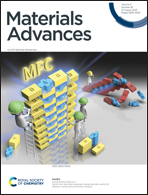Performance and application of carbon-based electrocatalysts in direct methanol fuel cell
Abstract
The growing energy demand with rapid consumption of fossil fuels and continuous rise in environmental issues have led to the development of an alternative energy conversion system, direct methanol fuel cell (DMFC). The high energy density, easy transportability of methanol and compact design, lightweight are some of the advantages of DMFC over other types of fuel cells. However, the high cost of platinum (Pt) catalyst and the poisoning of Pt electrode, sluggish reaction kinetics as well as methanol crossover are the major limitations of DMFC. Currently, carbon materials have drawn tremendous attention from researchers as catalyst support in DMFC due to remarkable properties, such as good electronic conductivity, better stability and environment friendliness that have an immense influence on fuel cell performance. In this regard, recently, advancements in carbon-based materials, including mesoporous carbon, carbon black, carbon quantum dots, carbon nanotubes, carbon nanofibre, graphene and other carbon forms such as carbon nanosheet, nanohorns, nanosphere as electrocatalyst support have been reported. The influence of doping with heteroatoms, functionalization, presence of defects and porous structure of carbon on the electrocatalytic performance has also been discussed in this report. Finally, challenges related to new generation carbon material-based electrocatalysts and future perspectives are discussed.



 Please wait while we load your content...
Please wait while we load your content...